Inventions
Transformers Are Real! ... Well, Sort Of
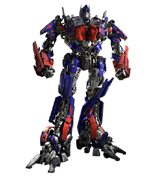
Posted By: Nethie - Mon Jun 08, 2009 -
Comments (3)
Category: Inventions, Motor Vehicles, Puppets and Automatons, Robots
Inventions of Buckminster Fuller, Part 4: The Dymaxion Bathroom
This was the finishing touch to Fuller's Dymaxion House.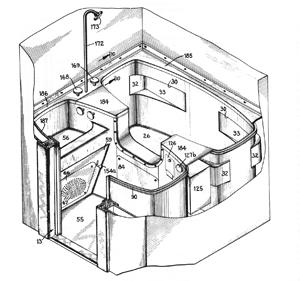
More in extended >>
Posted By: fyshstyxx - Wed Jun 03, 2009 -
Comments (3)
Category: Architecture, Bathrooms, Futurism, Inventions
Super Clarinet
A reader named Luke--thanks, Luke!--points us toward this triple-sized musical instrument. It reminds me of something Dr. Seuss would've drawn.
Posted By: Paul - Fri May 29, 2009 -
Comments (2)
Category: Inventions, Music, Technology, Reader Recommendation
Inventions of Buckminster Fuller, Part 3: The Dymaxion Map
This one is somewhat simpler than Bucky's other innovations, but no less impressive.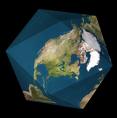
More in extended >>
Posted By: fyshstyxx - Wed May 27, 2009 -
Comments (2)
Category: Education, Inventions, Science
The Scream Muffler
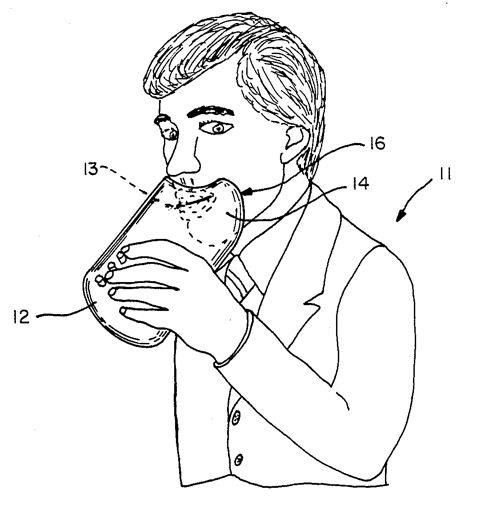
Patent No. 4834212, issued on May 30, 1989 to inventors Moira and Frank Figone.:
It is a general object of the present invention to provide a sound muffler which can be placed over the mouth to receive and muffle sound from the mouth. It is a further object of the present invention to provide a sound muffler which provides means for measuring and indicating the intensity of the sound which is muffled.
But there seems to be a prior art issue here, because I did a news search and found a story about a woman, Diane Berkowitz, who was selling a scream muffler in 1987 described as a "silver-colored sphere which opens to reveal some sort of sound-absorbent acoustic foam."
Perhaps the Figones were able to claim their device was unique because Berkowitz didn't add blinking lights to indicate the scream intensity.
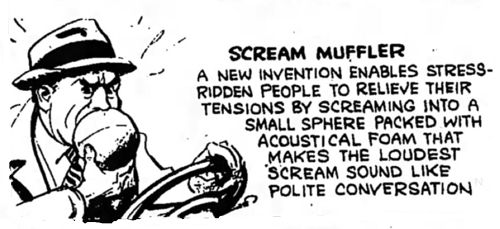
Ripley's Believe It or Not - Mar 5, 1987
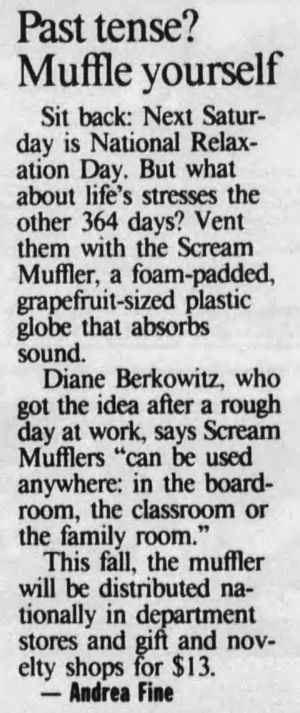
The White Plains Journal News - Aug 7, 1987
Posted By: Alex - Fri May 22, 2009 -
Comments (1)
Category: Inventions, Patents
The Most Evil Device Ever?

Posted By: Nethie - Thu May 21, 2009 -
Comments (4)
Category: Body Modifications, Crime, Death, Inventions, More Things To Worry About
Inventions of Buckminster Fuller, part 1: the Dymaxion Car
This is just one of the many strange inventions that Fuller imagined would improve society. Dymaxion, which is an abbreviation of dynamic maximum tension, was the name he attached to many of his inventions.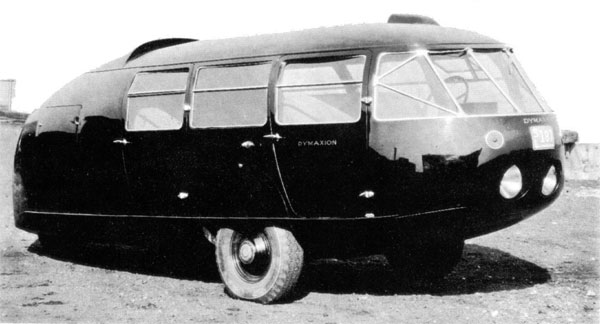
More in extended >>
Posted By: fyshstyxx - Fri May 15, 2009 -
Comments (5)
Category: Inventions, Odd Names, 1930s, Cars
Murals That Move

Posted By: Nethie - Fri May 15, 2009 -
Comments (3)
Category: Architecture, Art, Inventions
They Had That Back Then? #2
Today's lesson: Musical Ring Tones.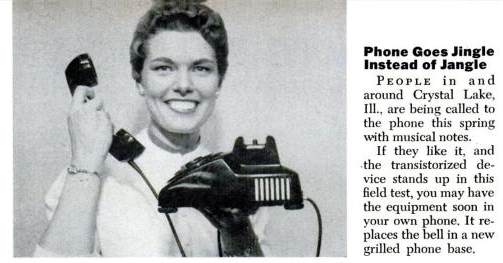
(from the May 1956 issue of Popular Science)
Posted By: Salamander Sam - Tue May 12, 2009 -
Comments (4)
Category: Inventions, Music, Technology, 1950s, Yesterday’s Tomorrows
Guess the Object
This is my first entry, so I thought I'd go with something simple. Have a guess as to what this is and find out on the comments page
More in extended >>
Posted By: fyshstyxx - Tue May 05, 2009 -
Comments (4)
Category: Awards, Prizes, Competitions and Contests, Inventions

| Who We Are |
|---|
| Alex Boese Alex is the creator and curator of the Museum of Hoaxes. He's also the author of various weird, non-fiction, science-themed books such as Elephants on Acid and Psychedelic Apes. Paul Di Filippo Paul has been paid to put weird ideas into fictional form for over thirty years, in his career as a noted science fiction writer. He has recently begun blogging on many curious topics with three fellow writers at The Inferior 4+1. Contact Us |




